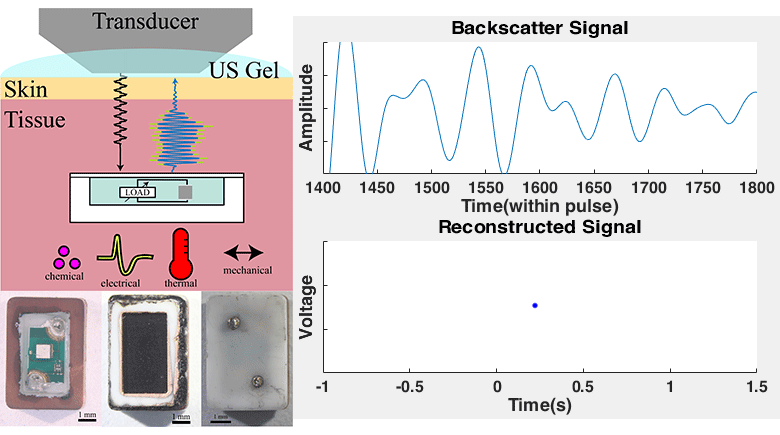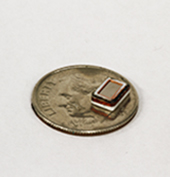
Active implantable medical devices hold significant promise for closed-loop monitoring of health metrics, but some potential remains untapped due to limited implantation lifetimes. Miniaturized and wireless implants can help mitigate disturbances to tissue and reduce immune response, but conventional electromagnetic communication is inefficient for wireless communication and powering through tissue at millimeter or sub-millimeter scales, which limits implantation depth. Ultrasound has emerged as an efficient modality for wireless power transfer through tissue, enabling millimeter and submillimeter scale devices to be implanted at centimeter-scale depths within tissue.
Harvesting ultrasonic energy, however, requires efficient transmission of the ultrasound wave through implant packaging materials. Polymeric encapsulation is the most common packaging approach taken in the academic literature due to ease of application and the low acoustic impedance of encapsulation polymers, which roughly matches that of tissue; this allows high transmission coefficients at the tissue-package interface for effective power harvesting. However, thin film polymers are not truly hermetic at chronic implant timescales. In contrast, clinically-approved chronic implants make use of ceramic and metal materials as package materials due to their low water-vapor permeability and chemical inertness. Unfortunately, these materials have relatively high acoustic impedances compared to tissue, resulting in low acoustic transmission coefficients at the package-tissue interface.
In this work, we model ultrasound transmission through metals using package designs that utilize either bulk mode propagation or flexural mode propagation. We show that high transmission coefficients can be attained in both cases, but the transmission coefficient is highly dependent on the geometry of the package and the operation frequency of interest. With these models, we develop a millimeter-scale hybrid alumina/titanium package that allows for efficient ultrasound transmission at the package-tissue interface and demonstrate ultrasonic powering and amplitude-modulated backscatter communication with a packaged electrophysiology sensor in benchtop experiments.

